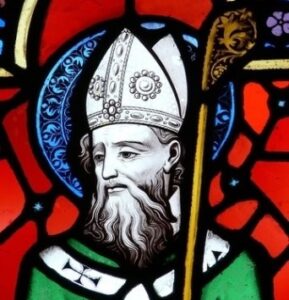History of St Patrick
St Patrick, who is often revered as Ireland’s patron saint, was born during the second half of the 4th century and his date of birth remains uncertain – some scholars estimate 373 while others propose 390.2

Also, no specific location can be ascertained where St Patrick was born.
He was raised near a village known as Banna Vemta Burniae; its exact location remains unknown. While it could have been anywhere in lowland Scotland or Wales (then under Roman control), it could equally well have been lowland Scotland.
Patrick may have been born Maewyn Succat and raised by Calpornius, an officer in Roman-British Army as well as being ordained as deacon.
Even with his family’s involvement in church activities, Patrick did not become a believer until the age of 16. At 16 Patrick experienced something extraordinary which changed everything for him: His life changed dramatically after experiencing what many would describe as spiritual awakening.
But events took an unexpected and momentous turn that altered both his life and that of Ireland forever.
A young lad was taken hostage by Irish pirates and sold into slavery in Ireland, as recorded in his autobiographical Confessio which survived. For six years he worked as herdsmen on Mount Slemish in Co. Antrim before finally escaping.
During his imprisonment and kidnap, he gradually become more religious, seeing it as punishment for having no faith and spending much of his time praying and offering sacrifices to Allah.
Patrick managed to return home safely following a vision that led him to board a ship bound for England and sneak onto it as an unexpected passenger.
As a priest in France he dreamt that Irish were calling out for him to come back home to tell them about God, prompting him to return as soon as a priest but not immediately due to feeling inadequately prepared to undertake missionary life in Ireland. Instead he traveled back and spent 12 years learning at monasteries with St Germain (bishop of Auxerre). Finally he made it back with Pope’s blessing as bishop sent back home as bishop for Ireland.
Ireland’s Apostle
Saint Patrick became widely renowned in Ireland following his landing at Strangford Loch, Co Down. Although often credited with having brought Christianity to Ireland for the first time, he wasn’t the sole pioneer.
Palladius had preached to Irish at an earlier mission.

Of course, Saint Patrick wasn’t always free from trouble; his history is marked with imprisonments brought about by local chieftains or Celtic Druids upset at his teachings, yet he managed to always gain freedom by giving gifts to his captors and present themselves with those.
Over twenty years, he travelled the entire island baptising people and founding monasteries, schools and churches along the way.
By the time of his death in 461 (or 493), St Patrick had established an organized church and an island of Christians; thus commemorating 17 March as St Patrick’s Day since.
He was interred either in Downpatrick, Co Down, or Armagh.